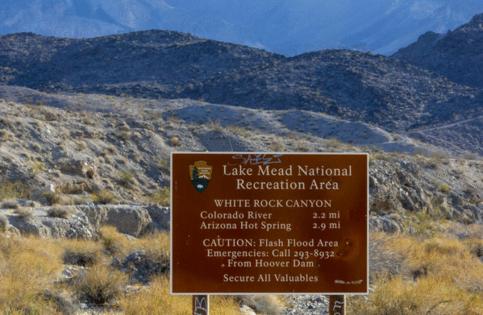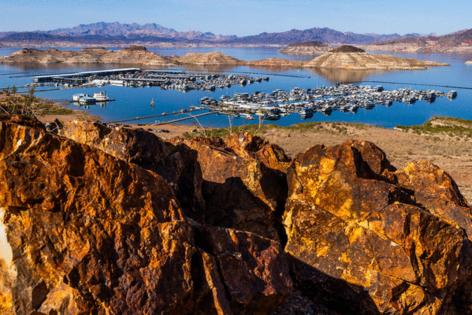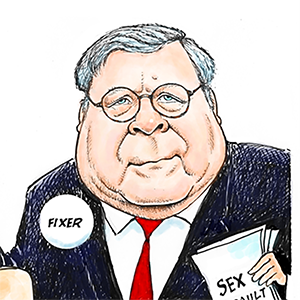'Leadership failure' is putting Lake Mead in peril, coalition says
Published in Science & Technology News
The crisis along the Colorado River is coming to a head as seven state negotiators fail to deliver an agreement on how to manage it over the next 20 years.
But the river system can’t wait, and common-sense solutions that states can implement in the interim are being ignored, a coalition of nongovernmental organizations argues in a report released Wednesday. The report, titled “There’s No Water Available” and released on what officials consider the first day of the new water year, outlines nine recommendations to avoid collapse.
The authors place some blame on the Upper Basin states of Colorado, Utah, New Mexico and Wyoming for their desire to draw more water from the river upstream and for their failure to commit to cuts in water use. Nevada, California and Arizona — the Lower Basin states — have, by contrast, a more realistic view of the immediate need to slash use across all states, the authors say.
“We could see serious water crashes this water year in the next 12 months because of the leadership failure that we have seen over the last several decades,” said Zach Frankel, executive director of the Utah Rivers Council, at a virtual news conference on Wednesday.
Wednesday’s report comes after a group of top Colorado River academics released its own that established how dire a situation the system would be in should another weak snowpack season come next year.
The nongovernmental organizations took the prior findings a step further by offering direct solutions, though implementing them would necessitate basin-wide cooperation, said Kyle Roerink, a report author and executive director of the Great Basin Water Network based in Nevada and Utah.
Less-than-fruitful river talks
The NGOs are quick to point out that the last time negotiators released any formal document for public review, as required by the National Environmental Policy Act, was in January.
“What we’re really expressing is a frustration that there isn’t a public process going on right now,” Roerink said. “Are we to just rely on 12 technocrats — the seven basin states, somebody from Mexico and a couple feds? When does the public get a better understanding of all this?”
Disagreements between north and south have underscored the closed-door, interstate negotiations, with the Upper and Lower Basins squarely on either side of the debate of whether more cuts in water use should be a Lower Basin problem alone.
Tensions boiled over last month into the nomination process for Bureau of Reclamation commissioner, who would have overseen Colorado River negotiations. The Trump administration’s nominee alleged that Upper Basin states had their senators intervene and force his withdrawal because of perceived bias against upstream states.
The only semblance of a consensus has come as an idea under consideration that would base releases from Lake Powell on a three-year average of “natural flows” measured at Lees Ferry in Arizona. One of the recommendations suggests more standardized tracking of evaporation and other water losses to ensure that proposal is based on sound data.
Interior Secretary Doug Burgum has indicated that the federal government is prepared to make a decision should states fail to deliver concepts of a plan by mid-November and a final one by February. Burgum has said he would prefer an all-state consensus, and experts say any action from the feds could stall conservation because of drawn-out legal challenges.
Negotiators are set to converge publicly again in Las Vegas at the Colorado River Water Users Association conference in December, though it’s unclear if they will have progress to announce.
‘Human intransigence’
Two of the report’s recommendations zero in on Upper Basin water use in particular, namely that those states need more transparent, public-facing plans to reduce water use and that they should cancel proposals to build new reservoirs and dams.
About 30 proposed water projects in the Upper Basin could consume more than 1 million acre-feet of water, according to the report.
“A host of powerful interests wants to take more out of the system rather than prepare for drier times,” the authors wrote, adding that “human intransigence” is a bigger threat to the river than climate change.
Wyoming State Engineer Brandon Gebhart said at an Upper Colorado River Commission meeting this month that he is being asked to “give up the future we were promised” by having to reconcile with cuts in Colorado River allocations that will inevitably hamper development.
Under the Colorado River Compact of 1922, the river is divided evenly between the two basins, with each of them afforded 7.5 million acre-feet per year. Upper Basin officials have argued that drought conditions already are forcing them to preemptively take cuts — about 1.3 million acre-feet per year on average because of meager snowpack and drought conditions, according to Becky Mitchell, Colorado’s representative on the commission.
“Due to the severity of the drought in the Upper Basin and because we do not have a Lake Powell or Mead above us, even our most senior water users who have rights dating from the 1800s are being shut off, resulting in mandatory conserved consumptive use,” Mitchell said in a statement.
Mitchell said new dams and diversions are subject to whether water supply is physically and legally available. A water right doesn’t guarantee delivery, she said.
All the Upper Basin water users are subject to cuts at the will of their state engineers, Mitchell said, and those officials “proactively and aggressively shut off water users when required.”
The other three Upper Basin water policy heads did not respond to a request seeking comment.
Gary Wockner, of the advocacy group Save the Colorado, criticized Mitchell’s past public statements, particularly in saying an agreement cannot mandate cuts for the Upper Basin.
“It is the most egregious statement I have ever heard, and as a negotiating strategy, it’s just absolutely inflammatory,” Wockner said.
Other recommendations
The new report recommends reducing city and agricultural uses through innovation.
It lauds the Southern Nevada Water Authority for its tone-setting conservation measures, such as mass grass removal and water re-use that makes it so that all water used indoors is recycled. Some of those policies have been unpopular among longtime residents of the region.
Agriculture in the Lower Basin remains the primary use of water the river by far, with the Imperial Irrigation District in California the largest user in any basin state. The region’s farms are economically important, providing a majority of the country’s winter vegetables.
Dry farming techniques could be a solution, according to the report, but authors acknowledge that spurring any high-impact change is a difficult task.
In the report, critical plumbing issues at Glen Canyon Dam are discussed — ones that the Bureau of Reclamation has said could affect water deliveries to the Lower Basin if reservoir levels are not stabilized. Authors suggest that solving that problem should be a part of the ongoing talks between states.
The other items outlined in the report include stabilizing groundwater levels throughout all states, affirming the senior water rights of Native American tribes and protecting endangered species.
Report authors say all of their recommendations could be achieved “without major changes in law or regulation” and that Congress, state officials and local water managers should be a part of working on these issues.
“We, the public, as Americans, have a right to ask: ‘Are we being well served?’” said Frankel, of the Utah Rivers Council. ‘It’s not an un-American question to ask that of these negotiators. It’s not about whether they’re good people. It’s about whether we as Americans can continue to enjoy the water supply that we need for our ecosystems and our economies.”
_____
©2025 Las Vegas Review-Journal. Visit reviewjournal.com.. Distributed by Tribune Content Agency, LLC.










Comments